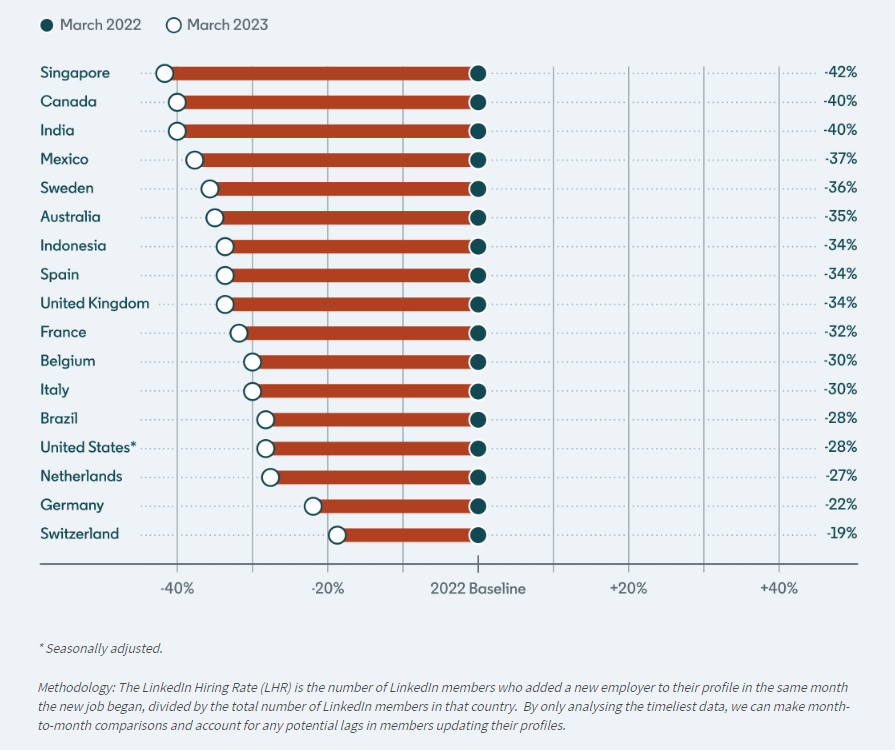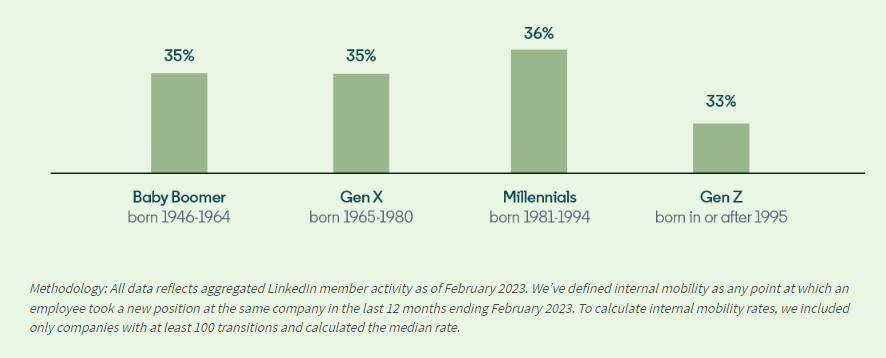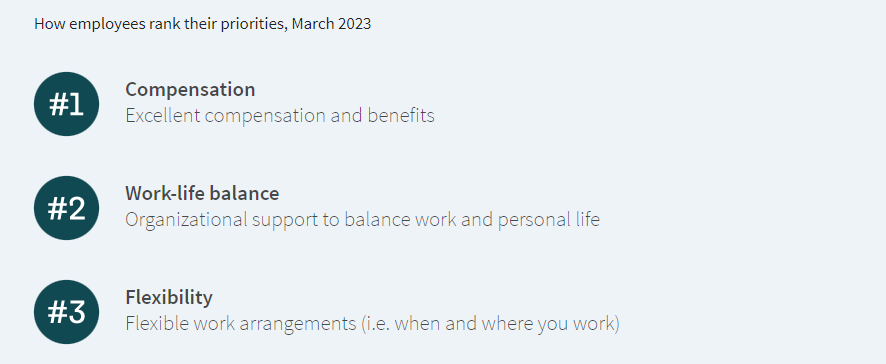
Latest research reveals the key talent trends of 2023

Hiring rates are continuing to drop off worldwide, but internal mobility is trending upwards, according to LinkedIn’s latest Global Talent Trends report.
The annual report showed a -35% decline in hiring in Australia in March 2023, compared to the same time in 2022. Conversely, 16 of the 19 global industries analysed showed an uptick in internal mobility - however, Australian employees are still 1.1x more likely to consider leaving their company than to look for an internal move.

This may be because external job openings are easier to find, and often provide bigger pay bumps - and so for employers, creating a learning culture focused on upskilling and re-skilling has never been more important.
“Our new internal mobility data insights are a bright spot, and a beacon into the future,” LinkedIn chief economist Karin Kimbrough says.
“And despite the current hiring slowdown, everything I’m seeing indicates that a top business challenge moving forward revolves around people: finding the people who have the skills businesses need, keeping them, and upskilling them.”
People leaders, women, and millennials in Australia and New Zealand appear to benefit the most from internal mobility this year. LinkedIn analysed data on members who took new positions at the same company over the last 12 months and found that people leaders such as managers (65%) and directors (58%) were more likely to move internally than individual contributors (36%).
Millennials also experienced the highest level of internal mobility (36%), followed by Gen X and Baby Boomers (35%). Women saw a slightly higher rate of internal mobility (37%) compared to men (33%).

With companies still concerned about employee retention, encouraging internal moves can often mean the difference between retaining or losing an employee. LinkedIn VP of talent development Linda Jingfang Cai says that employers need to start “asking tough questions” about their internal mobility culture and processes, and assessing whether internal moves are encouraged and clearly advertised.
She notes that even when employees do prioritise internal moves, they can often be discouraged by “clunky” hiring processes and may find it difficult to demonstrate transferrable skills.
“On top of that, their companies often won’t pay them the same as someone hired from outside,” Jingfang Cai says.
“We need to make it easier to assess and demonstrate skills and adopt equitable compensation practices that are based on skills. That’s how we unlock the real potential of internal mobility.”
When it comes to the top priorities of employees, their focus has remained consistent throughout the last two years. In Australia, compensation has regained the top priority for employees when considering what they want out of work, overtaking flexibility. Job security has surfaced as the third priority - up from 5th place month on month - illustrating the impact of the current economic uncertainty.

Worldwide, compensation has remained a top priority, with work-life balance and flexibility coming in second and third place respectively.
LinkedIn VP of global talent acquisition Jennifer Shappley highlights that the top three values of employees have become “almost immovable,” and it will be important for organisations and leaders to take note of the basic needs that employees want them to meet.
“When we cover the basics, we can start to look deeper within our employee populations and candidate pools to see what will make the difference between them joining our organizations (or staying) and looking for opportunities elsewhere,” Shappley says.
“People today want strong alignment between what they value and what their employers value.”
For more insights on worldwide talent trends, download the full 2023 Global Talent Trends report.
Don’t forget to check out the Australia & New Zealand edition.